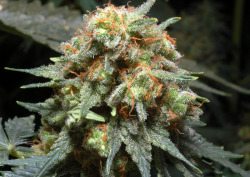
Can it possibly be that hemp agriculture presents a catastrophic threat to sinsemilla marijuana cultivation? Will the hemp field of dreams be a cannabis nightmare?
The climate of southern Oregon is among the world’s best for cultivating cannabis. Local growers have been producing some of the world’s finest marijuana for decades. Many have suffered arrest, imprisonment, and property forfeiture to the draconian drug war. But cannabis cultivation has persisted in this idyllic area, especially after marijuana became medically exempted in 1998, and again now as legal use for adults begins in July 2015 through Proposition 91. Yet as the legal environment improves for this huge, medically-valuable cash crop, a new danger arises.
Hemp is another manifestation to cannabis sativa, the same plant that produces medical cannabinoids. Hemp is wonder in itself, hugely useful to humankind and to the environment. Hemp seeds, oils, stalks — virtually every part of the plant — can provide humans with food, fuel, and fibers. Nationwide, hemp cultivation is quickly becoming legalized, thanks much in part to Kentucky republican Senators Ron Paul and Mitch McConnell, along with Oregon democrats Ron Wyden and Jeff Merkley. Hemp cultivation in Oregon was legalized in 2009 and now some farmers, including those in southern Oregon’s Jackson County are preparing to plant hemp crops.
Hemp is grown from very different varieties of cannabis sativa than is medical cannabis and is nearly devoid of any cannabinoids, psychotropic or otherwise. Is has no seizure-stopping CBDs, nor more than trace amounts of the medical (and transcendental) cannabinoid THC.
But what hemp does produce is pollen. Male pollen from newly legalized hemp cannabis sativa is a deadly threat to sinsemilla cultivation. At certain, quite lengthy periods in their life cycle, male hemp plants will produce copious amounts of sperm-producing pollen. Bad boys, bad boys! With industrial hemp planting legalized in Oregon, the first fields of seed-bearing hemp are even now being planned. At the same time these hemp seeds go into the ground, new medical cannabis starts will sprout (and be cloned) across the region.
After summer begins and the days begin to shorten, maturing cannabis plants will begin establish their sexual identities. White hairs show the beginnings of female bud, and small pods that will soon produce pollen mark male plants. These males will be quickly culled in sinsemilla gardens to avoid pollination of the female buds. But perhaps somewhere close by, maybe in the adjoining field, the hemp farmer will welcome the male plants as they will fertilize his females and cause them to produce seeds, perhaps nature’s most perfect food and the most valuable part of the hemp crop.
The question is, will massive clouds of this hemp pollen sweep across the land like a plague of Pharaoh, seeping into every sinsemilla garden, inside and out? Southern Oregon growers certainly fear so. The Oregonian’s OregonLive cannabis reporter Noelle Crombie quotes Cedar Grey of the Oregon Sungrown Growers’ Guild: “You have to have world-class flowers. Anything that is seeded is reminiscent of the 1960s or pot from Mexico. No one is interested in that at all.” Medically, pollination would rob marijuana of its potency, depriving patients of the pain relief, anti-inflammation, and other palliative, treatment, and even curative benefits.
Hemp pollination (and hence destruction) of sinsemilla is may cause havoc and disruption to growers and to medical marijuana patients. Will mom and pop cannabis boutique farms, a newly possible way to make a living for a family on a small piece of land, see their money trees literally go to seed? Will outdoor and indoor medical and adult use growers, a vital part of the southern Oregon economy, be wiped out? Will medical specialty grows, such as CBD-dominant cultivation no longer be able to supply patients? Will parents of seizure-stricken children be unable to get seizure-calming cannabis medications?
At this point there are more question than answers, as the huge experiment is about to begin in southern Oregon. What happens there will be instructive, as this same collision between hemp pollen and sinsemilla flower will play out across the state, the country, and around the entire planet as cultivation ramps up tremendously this century of both these two highly valuable aspects of cannabis.
How do you see this playing out? How do you think can conflict be avoided?
Please check out my related post on this important new topic at Your Brain On Bliss.






